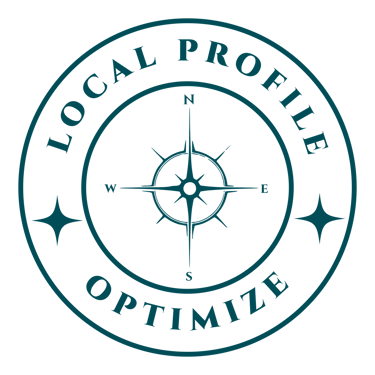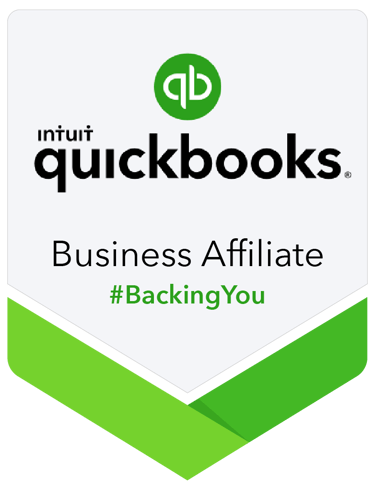Cash Flow Statement Guide for Small Business Owners
Master your business cash flow with this beginner-friendly guide. Learn the difference between profit and cash, and why tracking both matters for your small business success.
REPORTING
Jerry Blanco
10/14/20255 min read


Why Tracking Your Money's Movement Matters More Than You Think
You've probably heard the saying: "Cash is king." But if you're like most small business owners I've worked with over my 20+ years as an accountant, you might be wondering why everyone keeps repeating this—especially when your profit and loss statement says you're making money.
Here's a truth that surprises many entrepreneurs: Your business can be profitable on paper and still run out of cash. I've seen it happen countless times. A thriving business with impressive sales suddenly can't make payroll or pay a critical vendor because the cash just isn't there.
That's exactly why the cash flow statement exists—and why understanding it could be the difference between a business that survives and one that thrives.
What Exactly Is a Cash Flow Statement?
Think of your cash flow statement as a movie of your money's movement, while your other financial statements are more like snapshots.
The cash flow statement tracks every dollar that flows into and out of your business during a specific period—usually a month, quarter, or year. It answers one critical question: Where did my cash actually go?
This is different from your income statement (also called a profit and loss statement), which shows your revenue and expenses using accrual accounting. With accrual accounting, you might record a $5,000 sale in March even if the customer won't pay you until May. Your income statement says you earned $5,000 in March, but your bank account? Still waiting.
Your balance sheet is another snapshot—it shows what you own (assets), what you owe (liabilities), and what's left over (equity) at a specific point in time. It's like looking at your business's financial health on a particular day.
The cash flow statement bridges these two reports by showing you the actual cash movement—the real money hitting (or leaving) your bank account.
Why Small Business Owners Can't Afford to Ignore Cash Flow
Here's a scenario I see regularly: Sarah runs a graphic design business. Her income statement shows she made $8,000 in profit last month. But when she tries to pay herself and cover expenses, there's only $1,200 in the bank. What happened?
She invoiced $12,000 in client work (revenue on her income statement), but only collected $4,000. She also bought a new computer for $2,500—an asset that doesn't fully hit her income statement right away, but definitely hit her bank account immediately.
This is why cash flow matters:
You can't pay bills with profit—you need actual cash
Timing is everything—knowing when money comes in and goes out helps you plan
Growth requires cash—hiring, inventory, equipment all need money now, not later
Banks look at cash flow—if you ever need a loan, lenders want to see strong cash management
Understanding your cash flow statement helps you anticipate cash crunches before they become emergencies and make smarter decisions about when to invest in growth.
The Three Sections of Your Cash Flow Statement
Your cash flow statement is divided into three sections, each telling you something different about how you're managing money.
1. Operating Activities: Your Day-to-Day Money Movement
This section shows cash from your core business operations—the stuff you do every day to make money.
Cash coming in:
Customer payments (not when you invoice, but when they actually pay)
Client retainers or deposits
Cash going out:
Paying suppliers and vendors
Payroll and contractor payments
Rent, utilities, insurance
Office supplies and everyday expenses
Think of this as the heartbeat of your business. If your operating cash flow is consistently positive, it means your core business generates cash naturally—a great sign! If it's negative month after month, that's a red flag that your business model might need adjustment.
Action step: Look at your bank statements for the past three months. Add up all money received from customers and subtract all money paid for operating expenses. Is the number positive or negative?
2. Investing Activities: Building for the Future
This section tracks cash you spend on long-term assets or receive from selling them.
Cash going out for:
Equipment purchases (computers, machinery, vehicles)
Buying property or making leasehold improvements
Purchasing another business or investment
Cash coming in from:
Selling old equipment or property
Selling investments
For most small businesses in growth mode, this section will be negative—and that's okay! It means you're investing in your future. The key is balancing these investments with strong operating cash flow.
Action step: Before making any major purchase (anything over $1,000), ask yourself: "Can I afford this without compromising my ability to pay regular bills for the next 3 months?"
3. Financing Activities: How You Fund Your Business
This section shows cash from borrowing money or adding owner investment, plus any payments back to lenders or owners.
Cash coming in from:
Business loans or lines of credit
Owner contributions (money you put into the business)
Investor funding
Cash going out for:
Loan principal payments (note: interest goes in operating activities)
Owner draws or distributions
Paying back investors
This section tells you how dependent you are on external funding. As your business matures, you ideally want to rely less on financing and more on operating activities to generate cash.
Action step: If you have business debt, know exactly how much cash goes toward debt payments each month. This helps you plan for those fixed obligations.
Putting It All Together: Reading Your Cash Flow Story
At the bottom of your cash flow statement, you'll see:
Beginning cash balance (what you started with)
Net cash change (the sum of all three sections)
Ending cash balance (what you finished with)
This ending balance should match what's actually in your bank account—that's your reality check.
Here's what healthy cash flow looks like for most small businesses:
Positive operating cash flow (your business naturally generates cash)
Negative or modest investing cash flow (you're strategically investing in growth)
Decreasing dependence on financing (you're becoming more self-sustaining)
Your Next Steps: Taking Control of Your Cash Flow
Understanding the cash flow statement is only valuable if you actually use this information. Here's how to start:
1. Create a simple cash flow forecast Project your expected cash inflows and outflows for the next 90 days. Update it weekly. This helps you spot potential shortfalls before they happen.
2. Accelerate collections Send invoices immediately, offer early payment discounts, and follow up on overdue invoices within a week. The faster customers pay, the better your cash position.
3. Negotiate better payment terms Can you pay suppliers in 30 days instead of 15? Can you collect from customers in 15 days instead of 30? Every day matters.
4. Build a cash reserve Aim for at least one month of operating expenses in a separate savings account. This buffer reduces stress and gives you options.
5. Review your cash flow monthly Set a recurring appointment with yourself (or your bookkeeper) to review where your cash went and plan for the next month.
The Bottom Line
Your cash flow statement isn't just another financial report to file away—it's your business's early warning system and strategic planning tool rolled into one.
You don't need to be an accountant to understand it. You just need to recognize that profit and cash are two different things, and your business needs both to succeed. By paying attention to where your cash actually goes each month, you'll make smarter decisions, avoid unnecessary stress, and build a more resilient business.
Remember: A profitable business that runs out of cash doesn't survive. But a business that masters cash flow? That business has the foundation to grow, weather storms, and ultimately give you the financial freedom you're working so hard to achieve.
Disclaimer: The information provided in this blog post is for educational purposes only and should not be construed as financial or accounting advice. Every business situation is unique. Please consult with a qualified accountant or financial advisor for advice specific to your circumstances.


